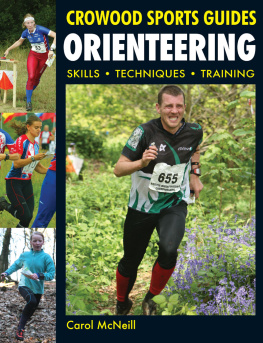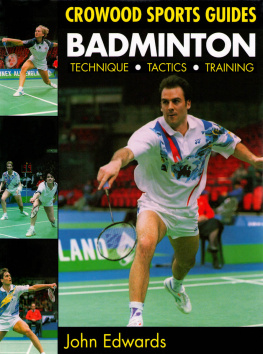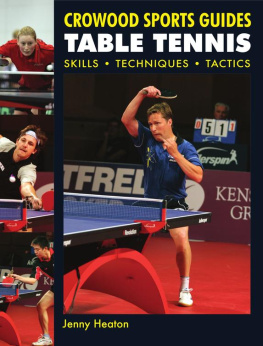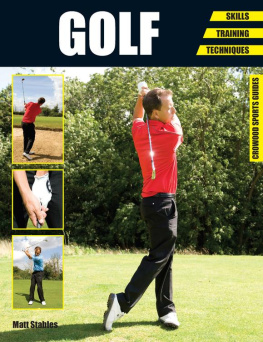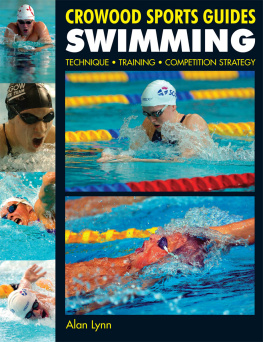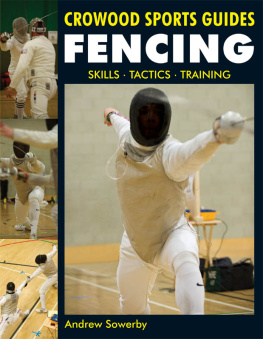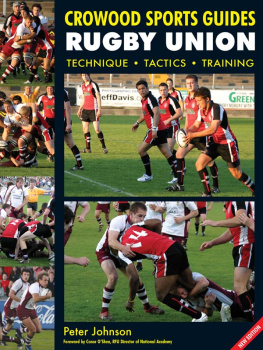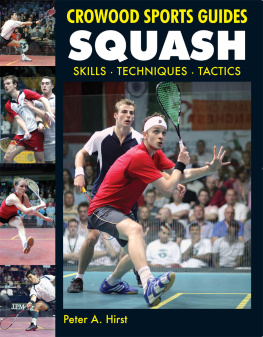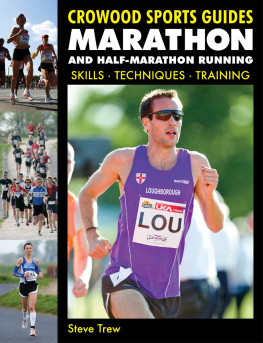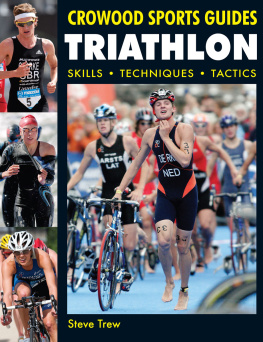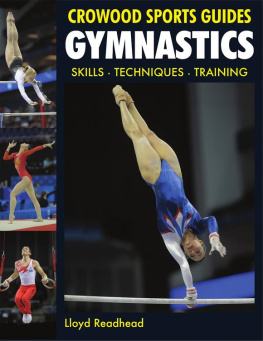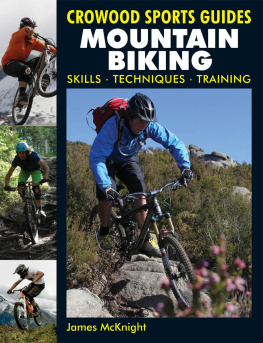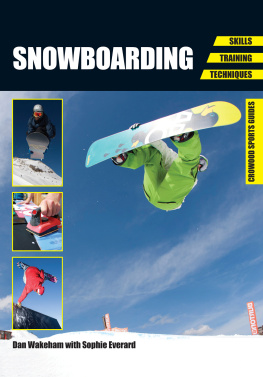
CROWOOD SPORTS GUIDES
ORIENTEERING
SKILLS TECHNIQUES TRAINING
Carol McNeill

THE CROWOOD PRESS
First published in 2010 by
The Crowood Press Ltd
Ramsbury, Marlborough
Wiltshire SN8 2HR
www.crowood.com
This e-book first published in 2014
The Crowood Press 2010
All rights reserved. No part of this publication may be reproduced or transmitted in any form or by any means, electronic or mechanical, including photocopy, recording, or any information storage and retrieval system, without permission in writing from the publishers.
British Library Cataloguing-in-Publication Data
A catalogue record for this book is available from the British Library.
ISBN: 978 1 84797 858 5
Disclaimer
The author and the publisher do not accept any responsibility in any manner whatsoever for any error or omission, or any loss, damage, injury, adverse outcome, or liability of any kind incurred as a result of the use of any of the information contained in this book, or reliance upon it. If in doubt about any aspect of orienteering, readers are advised to seek professional advice. Since the exercises and other physical activities described in this book may be too strenuous in nature for some readers to engage in safely, it is essential that a doctor is consulted before undertaking such exercises and activities.
CONTENTS
ACKNOWLEDGEMENTS
The Author (and publishers) would like to thank all the orienteers in the photographs and especially the following for their help and cooperation in the production of this book:
Iain Smith-Ward for technical advice and j-pegging all the maps.
Liz Campbell, Duncan Archer, Pippa Whitehouse and Richard Lecky Thompson for reading and helping me to make it all up to date.
Julian Donelly for help with the periodization chart technology.
Graham Gristwood and Pippa Whitehouse for their race commentaries.
Martin Bagness/Warrior OC (WAROC) for the drawings in .
Lakeland Orienteering Club, Warrior Orienteering Club, South Ribble Orienteering Club and the North West Orienteering Association for use of their maps.
ron Less, Secretary General of the World Orienteering Championships 2009 for the sprint and long race final maps and courses.
Unless otherwise stated, the photographs in this book were taken by Phil Burdge.

CHAPTER 1
INTRODUCTION TO ORIENTEERING
Orienteering is a running sport. The competitive orienteer runs with a map and compass, choosing routes, to find a fixed number of control points that are marked precisely on the map and indicated in the terrain by large red and white control markers, or kites. Each control point has a code number and a means to register each visit. This is usually an electronic box, but it could be a pin punch or letters to record. The course will vary in length and difficulty depending upon the age, experience and fitness of the competitor. Within each class, it is the person finding all the controls in the right order in the shortest time who wins.

A control point with a code number and electronic box to register each visit.
History
The sport of orienteering was pioneered in Sweden. Major Ernst Killander organized one of the first official events in 1918 as a result of his concern for a falling interest in athletics and a lack of use of the forest environment. It has grown since then to become one of the most popular sports in Sweden. From Sweden, the sport spread to the rest of Scandinavia and then to Europe, followed by other countries throughout the world.
It was a Swede, Baron Rak Lagerfelt of the Stockholm Orienteering Club, who had a major influence in establishing the sport in Britain. In 1962, Lagerfelt came to Scotland to help develop the sport. His work culminated in the first championship being held in May 1962 at Dunkeld and the formation of the Scottish Orienteering Association.
The first orienteering clubs were formed by athletes with an interest in navigation, climbing and fell running. Southern Navigators, South Ribble Orienteering Club and Edinburgh Southern Orienteering Club were the first of the many clubs that now cover the whole of the United Kingdom. The interest and organizational energy of well-established and international athletes such as John Disley, Chris Brasher, Bruce Tulloch, Martin Hyman and Gordon Pirie helped a great deal in developing the sport in its early days, including the implementation of guidelines and rules of competition.
In 1967 the English and Scottish Orienteering Associations amalgamated to form the British Orienteering Federation. The BOF is the governing body of the sport, which co-ordinates the administration and maintenance of standards.
Maps
The growth of the sport has largely been influenced by the improvement in the quality of maps. The early events were dependent upon copies of Ordnance Survey maps. Now, with advances in printing technology, all events provide a specially drawn large-scale coloured map for each competitor.
Look at the map and see if you can spot differences with other maps you use.
The areas are surveyed and the map digitally drawn by orienteers using international specifications for orienteering maps. Contours of 5m or 2.5m show the precise nature of the terrain and other details, such as large boulders, pits, gullies, depressions and small crags that enable the orienteer to know exactly where he or she is at all times, as well as providing a large number of potential control sites. The time-consuming job of making orienteering maps involving photogrammetry, surveying and cartography, and the printing is done by one of the small businesses that offer this specialist service. Many clubs are also able to draw on the skills of members who have made map-making their spare-time interest.

An orienteering map with an Orange (TD3) course.
A World-Wide Sport
The International Orienteering Federation is the umbrella organization for the four recognized orienteering disciplines: Foot O, Mountain Bike O, Ski O and Trail O. It was founded in 1961 and aims to promote the development of orienteering in its member countries. Most events held in these countries are open to all standards of competitors, including beginners. The IOF also creates and maintains a world event programme including World Championships for seniors, students, juniors and veterans.
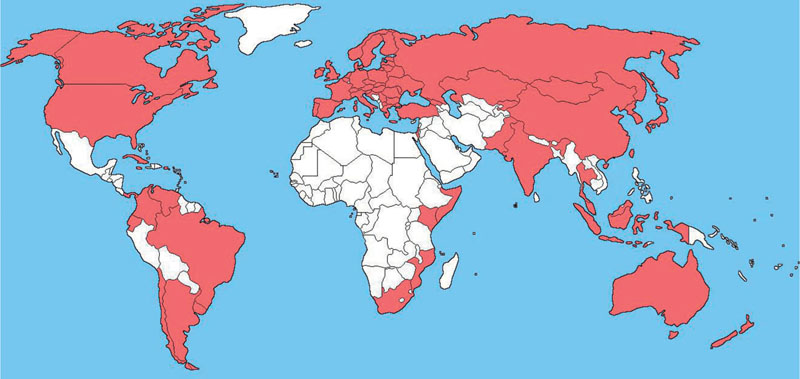
The International Orienteering Federation has more than seventy member countries.
Types of Orienteering
At its most competitive, the sport of orienteering, or foot O, offers a lot to the athlete who likes to think, as well as run. The sport is organized to offer an adventurous challenge to children and adults of all ages and athletic ability. String courses for the under tens allow even three- or four-year-old children to enjoy finding controls while running through woodland.

